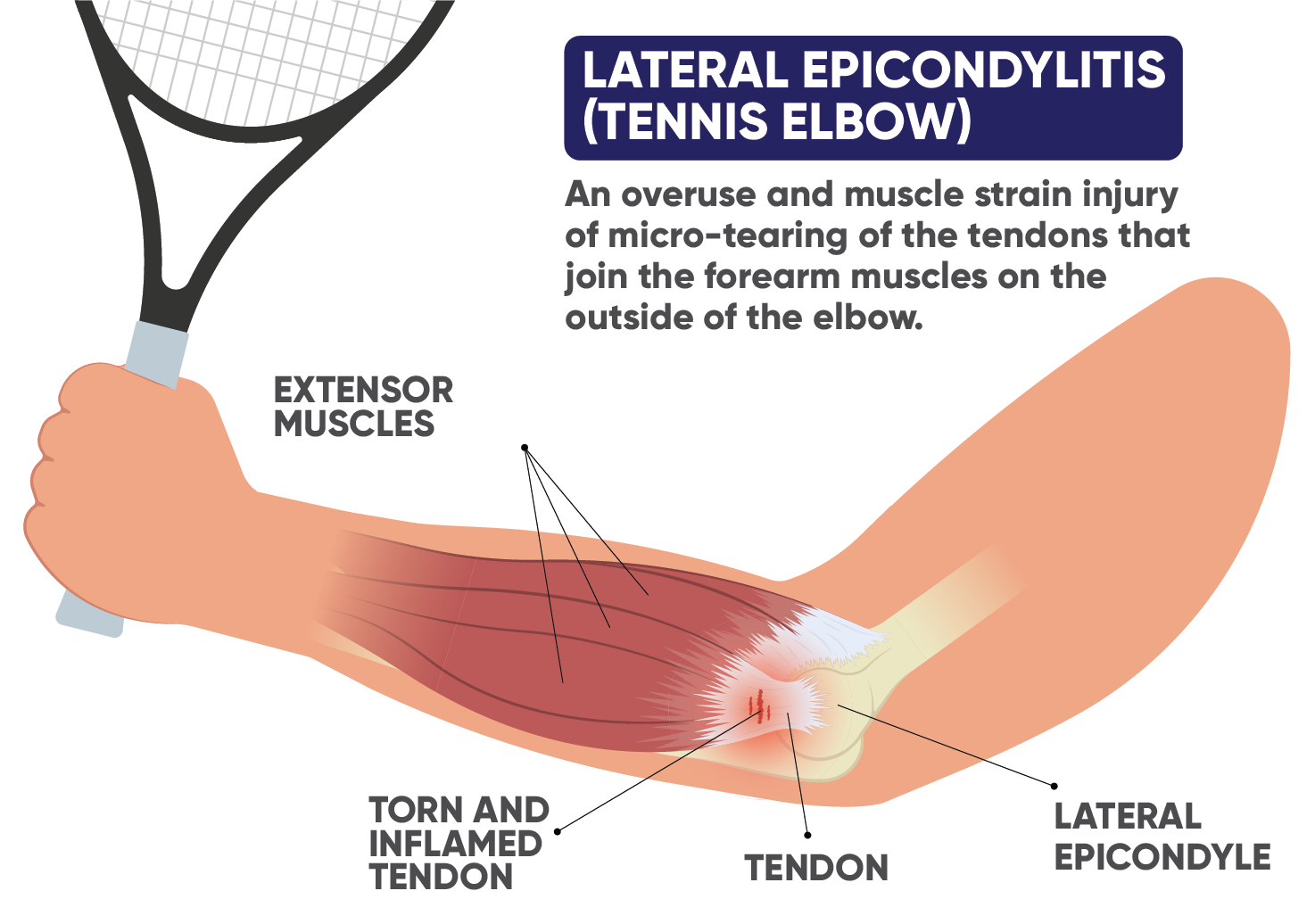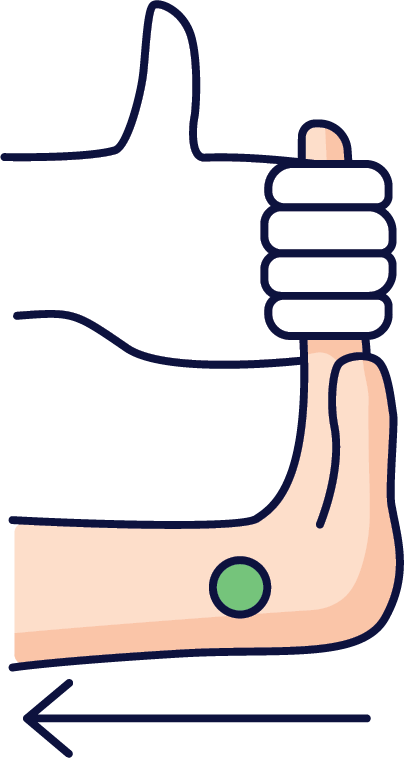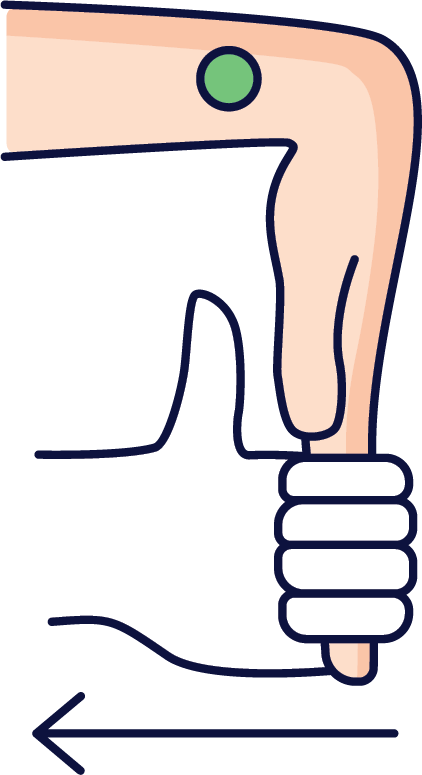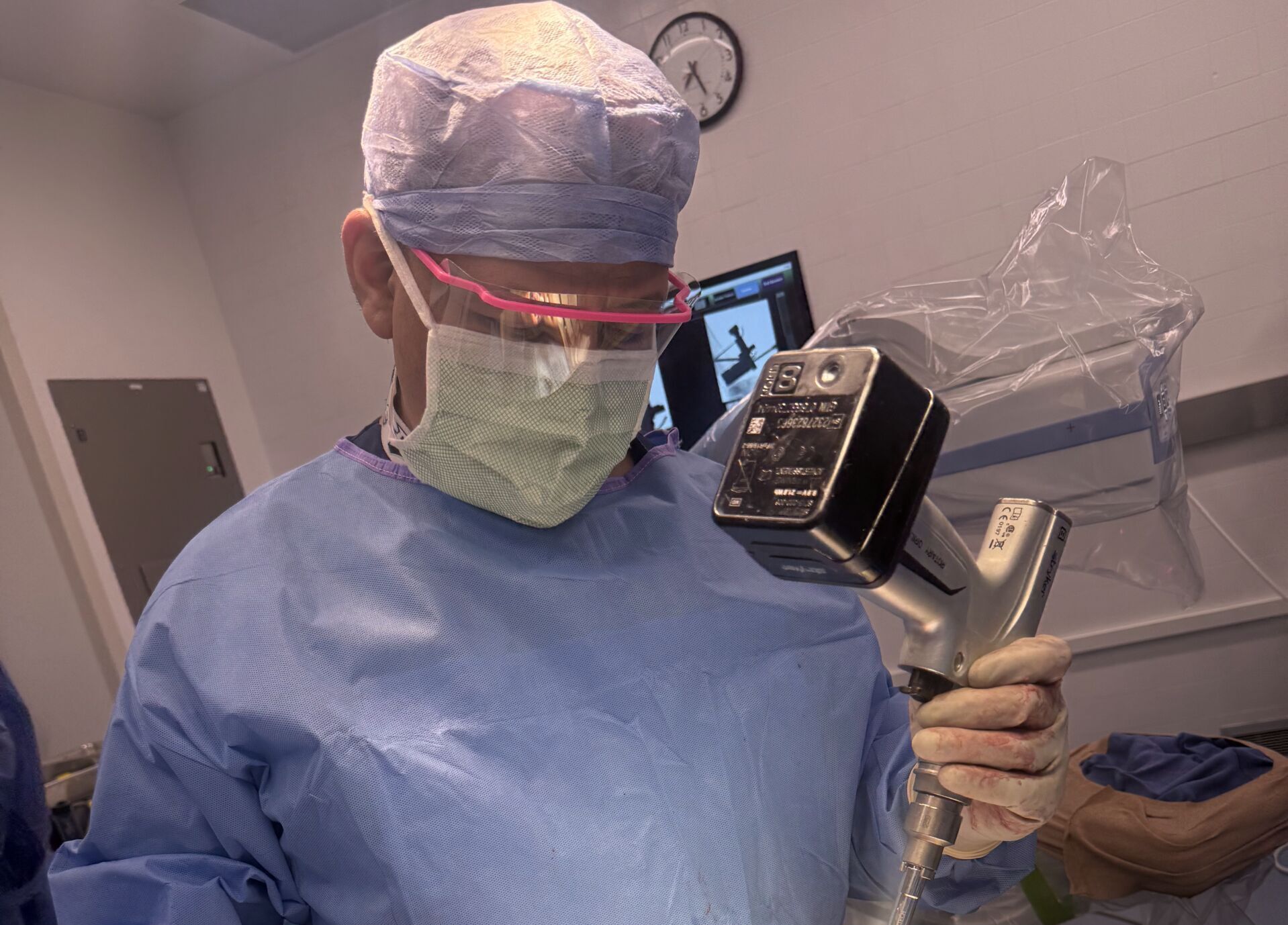
Tennis elbow, or lateral epicondylitis, is caused by repeated muscle contractions of the forearm and wrist, resulting in pain and irritation of the affected muscles. Overuse of the forearm and wrist muscles, or overloaded muscles may become sore and painful causing inflammation.
An individual with “Tennis elbow” may experience muscle soreness, pain, or persistent discomfort on the outer, or lateral, part of the elbow which may be accompanied by decreased grip strength.
Causes:
Tennis and other racquet sports – In racquet sports like tennis, improper stroke technique and improper equipment may be risk factors.
Occupations involving repetitive movements may contribute to elbow injury and pain. For instance, an office worker may experience tennis elbow symptoms due to repetitive computer mouse use. Age may also be a factor, with tennis elbow affecting mostly those between 30-50 years of age.
Other occupations that may be at a higher risk for elbow pain & injury include:
- Butcher/Cook/Baker
- Painters
- Plumbers
- Carpenters
- Auto workers
Symptoms may include:
- Pain that may be described as burning, achy, throbbing, or sharp with rest and or activity.
- Sharp pain that increases with activity
- Grip weakness & fatigue
- Achy & throbbing pain at night
Treatments:
With overuse injuries, the RICE (rest, ice, compression, elevation) method is recommended along with OTC (over the counter) pain medication and anti-inflammatories as needed. NSAIDS, non-steroidal anti-inflammatory drugs such as ibuprofen or naproxen can help to reduce and manage inflammation and pain.
Rest & Compression: There are compressive elbow sleeves available that may help with pain and inflammation. Restrictive braces to be worn at night or during certain activities may help to properly rest the affected area to decrease prolonged irritation.
Ice: Ice application over concern or pain will help to temporarily decrease pain and inflammation. Make sure to cover bony areas around the elbow with a thin covering, like a pillowcase or paper towel, to protect superficial nerves, before applying ice for 15-20 minutes. Allow the area to become warm to the touch, before icing again.
Physical therapy or a home exercise program, and activity modification may help to treat and alleviate your symptoms by increasing strength or range of motion. Gentle and consistent stretching can help to lengthen muscle tissue, as well as help to relax tense irritated muscles.
Activity modification may include changing the intensity, duration and/or frequency of an activity that may be contributing to your symptoms. Avid weekend warriors may need to scale back on tennis playing and/or consult with a coach to modify form and racquet/ equipment set-up.
Complete these forearm/wrist stretches 2-3x/day! Hold each stretch for 20-30 seconds.
Wrist flexor stretch

- Extend your arm in front of you.
- Bend your wrist, pointing your palm out.
- With your other hand, gently bend your wrist farther until you feel a mild to moderate stretch in your forearm.
- Hold for at least 15 to 30 seconds. Repeat 2 to 4 times.
Wrist extensor stretch

- Repeat steps 1 to 4 of the stretch above but begin with your extended hand palm down.
When to see a doctor:
- Persistent and chronic symptoms that effect activities of daily living
- Decreased grip strength with numbness and/or tingling into the hand
- Noticeable deformity
Alternative treatments: After consulting with a medical provider, various injection treatments may be determined beneficial dependent on each individual case. Steroid injections can be an effective anti-inflammatory that may help to reduce symptoms.



